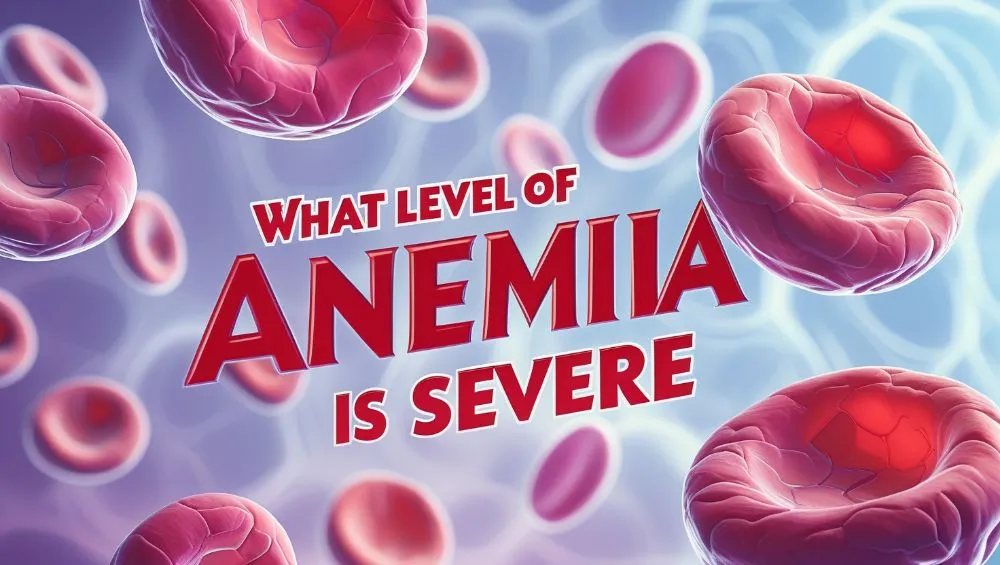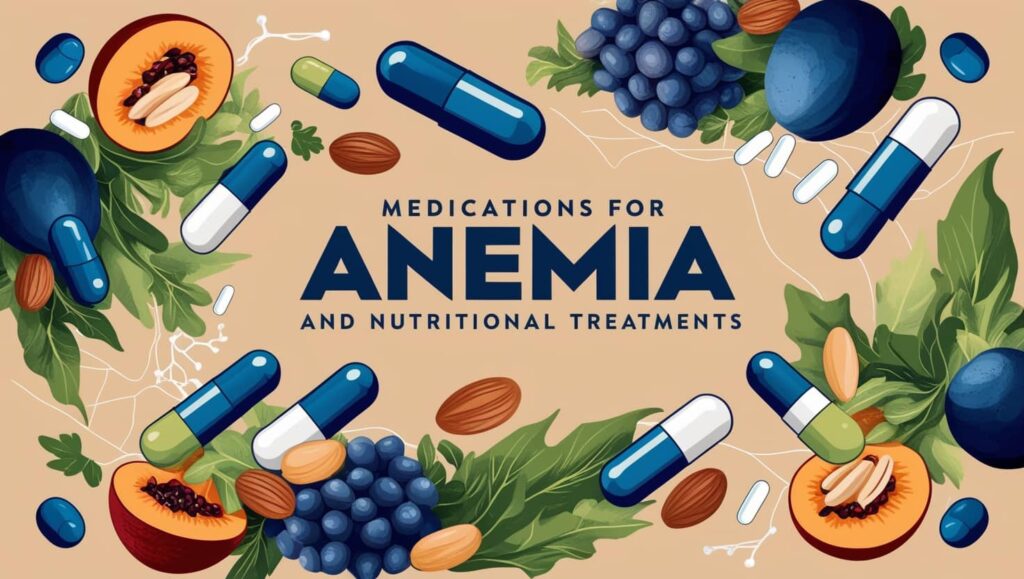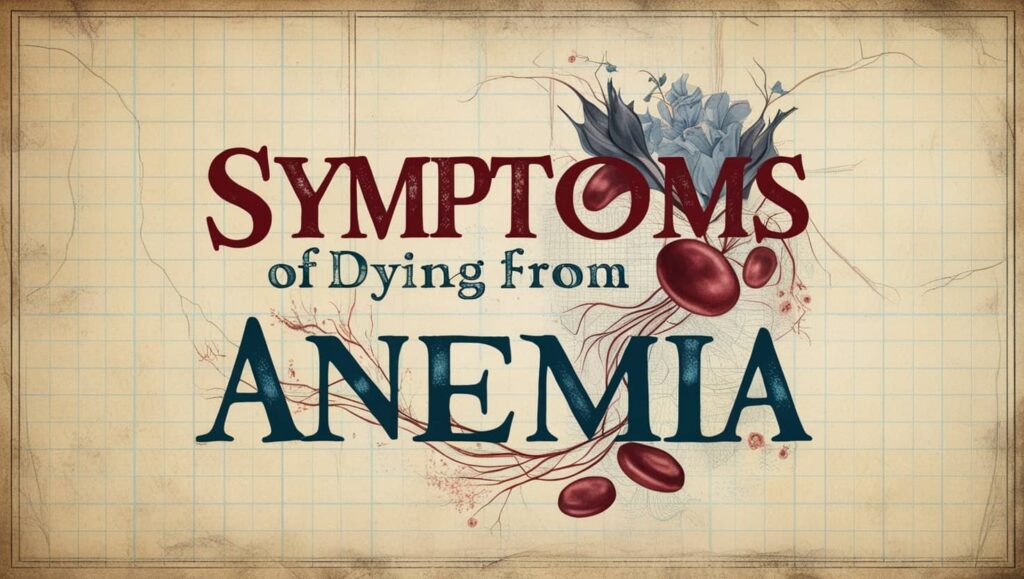Many individuals mention,“I have anemia,” but, in reality, most don’t know when anemia becomes significantly dangerous, reaching the stage that requires intensive care. Neglecting hemoglobin levels can lead to dangerous complications that affect the heart, brain, and other vital organs.
The crucial question arises here: What level of anemia is severe? A clear and professional answer is essential for differentiating between mild and manageable anemia, and cases that require urgent medical attention. This essay will address this question step by step. Keep reading—let’s dive in!
What Is Severe Anemia?
In order to discuss what level of anemia is severe, it is important first to clarify what anemia refers to and when it becomes severe.
According to “WHO”, which considers anemia as a condition that occurs when there’s a deficiency of healthy red blood cells, which carry oxygen throughout the body, or when hemoglobin levels drop in the blood.
Anemia is not a disease itself, but a group of disorders that can result from several causes, such as malnutrition, genetic conditions, or chronic diseases.
Severe anemia is determined when the count of red blood cells and hemoglobin levels progresses from mild to moderate and eventually reaches critically low levels based on the results of laboratory values and clinical signs, which require emergency medical attention.
What Hemoglobin Level Is Considered Severe Anemia?
According to the World Health Organization, anemia is classified based on hemoglobin concentrations.
For adult non-pregnant women, mild anemia is defined as hemoglobin levels range between 10–10.9 g/ dL, while in adult men, the threshold ranges from 10 – 11.9g/dl.
Whereas, moderate anemia falls within the hemoglobin range of 7.0–9.9 g/L.
Nevertheless, to address what level of anemia is severe, as outlined by WHO, hemoglobin levels fall below 7.0 g/dL or a sudden reduction in the count of red blood cells.
What Diseases Cause Severe Anemia?
To know what level of anemia is severe, you should get the diseases and conditions that lead to it, which can be illustrated as follows:
- Genetic disorders.
- Problems of Bone marrow and stem cells.
- Iron deficiency.
- Vitamin deficiencies.
- Inflammation.
- Other conditions.
Genetic Disorders
In these conditions, the red blood cells become fragile and burst because they can’t handle stress and pass through the blood stream, such as:
- Thalassemia is an inherited blood disorder due to absence of synthesis of alpha or beta chains of hemoglobin leading to ineffective erythropoiesis process and severe anemia, it classified into Alpha thalassemia and beta thalassemia.
- Sickle cell anemia is a hereditary disorder resulting from mutation in beta goblin gene, the red blood cells become rigid and crescent shaped which lead to rapid destruction of cells resulting in hemolytic anemia which become severe.
Problems of Bone Marrow And Stems Cells
These issues lead to severe anemia resulting when bone marrow cannot produce cells as in aplastic anemia or the stem cells are replaced by cancer cells such as leukemia and multiple myeloma.
Iron Deficiency
The most common reason for anemia in general is deficiency of iron, because bone marrow needs iron for building hemoglobin, some issues, such as:
- Gastrointestinal conditions as peptic or stomach ulcer, removed part of stomach or intestine, Crohn’s disease.
- Insufficient diet of iron.
- Malabsorption of iron.
Vitamin Deficiencies
Lack of certain vitamins such as vitamin B12 and folic acid. These vitamins are important for making red blood cells.
Inflammation
The infection with persistent chronic diseases that lead to inflammation can cause severe anemia, including:
- Autoimmune diseases.
- Chronic kidney disease, in which the kidney produces erythropoietin that is responsible for stimulation of production of red blood cells.
- Cancer.
- Chronic infections.
Other Conditions
Some other issues can lead to severe anemia, involving:
- An enlarged spleen can capture and break down red blood cells.
- Exposure to injury or surgery.
- Heavy menstrual cycle.
- Using Non steroids anti-inflammatory drugs that cause gastritis.
- HIV individuals.
How To know If Anemia Is Severe?

Signs and symptoms that indicate what level of anemia is severe, such as:
- Breathlessness.
- Extreme fatigue.
- Abdominal pain
- Mood swings.
- Pale skin.
- Persistent headache.
- Loss of conscious.
- Irregular heart beat.
- Risk of heart attack.
- Dizziness.
- Pale tongue.
- Brittle nails.
How Do You Diagnose Severe Anemia?
Diagnosing severe anemia requires clinical examination, blood tests, and diagnostic tests as follows:
Clinical Examination
A health care provider begins by reviewing your medical history, followed by an assessment of symptoms, such as severe fatigue, dizziness, and a physical examination focusing on heart beats and blood pressure.
Blood Tests
The key test to determine what level of anemia is severe, include:
- Complete blood picture” CBC”. This test is used for measuring different parts of the blood, such as the count of red blood cells, white blood cells, and platelets, and additionally determine the levels of hemoglobin and hematocrit.
- Reticulocyte count to evaluate the activity of bone marrow.
- Smear of blood film to recognize any abnormality in the shape and size of red blood cells.
- Iron and ferritin tests
- Vitamin B12 and folic acid tests.
- Bone marrow examination to detect bone marrow failure, and leukemia.
Diagnostic Tests
The doctor also recommends additional tests to determine if your symptoms are related to severe anemia or other conditions, and to clarify what level of anemia is severe in your case, for example:
- Endoscopy looks for bleeding from the stomach, or the first part of the small intestine.
- Genetic tests to detect mutations that occur in genes leading to some diseases such as thalassemia.
- Colonoscopy searches for bleeding of the colon or the presence of tumors.
- Urinalysis checks the effectiveness of the kidneys and if there is any bleeding in the urinary tract.
Can You Recover from severe anemia?
Once it is clear what level of anemia is severe, the following critical step focuses on treatment and recovery. Where severe anemia is an urgent medical condition, its treatment depends on the underlying cause. Therefore, treatment may include:
- Blood transfusion in cases of life-threatening severe anemia such as thalassemia and sickle cell anemia.
- Iron and vitamin supplements.
- Medications or specific therapies to manage chronic diseases.
- Bone marrow transplantation in case of leukemia or aplastic anemia.
Ultimately, understanding what level of anemia is severe is the key to uncovering the hidden causes that push hemoglobin level below 7.0 g/dL. A critical point where urgent medical care becomes a matter of saving lives.
References
- Al-Naseem, A., Sallam, A., Choudhury, S., & Thachil, J. (2021b, March). Iron deficiency without anaemia: A diagnosis that matters. Clinical medicine (London, England). From NCBI
- World Health Organization. (n.d.). Anaemia. World Health Organization. From WHO
- Shih, A., Kassanoff, R. E., & Altrabulsi, B. (2001a, July). Severe anemia. Proceedings (Baylor University. Medical Center). From PubMed
- U.S. Department of Health and Human Services. (n.d.). What is sickle cell disease?. National Heart Lung and Blood Institute. From NIH
- U.S. Department of Health and Human Services. (n.d.). Anemia of inflammation or chronic disease – NIDDK. National Institute of Diabetes and Digestive and Kidney Diseases. From NIDDK
- U.S. Department of Health and Human Services. (n.d.-a). Diagnosis. National Heart Lung and Blood Institute. From NIH
- U.S. Department of Health and Human Services. (n.d.-b). Treatment and management. National Heart Lung and Blood Institute.From NIH







